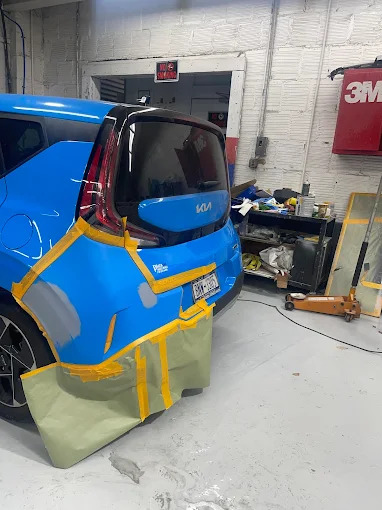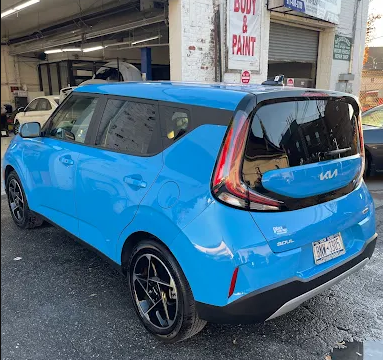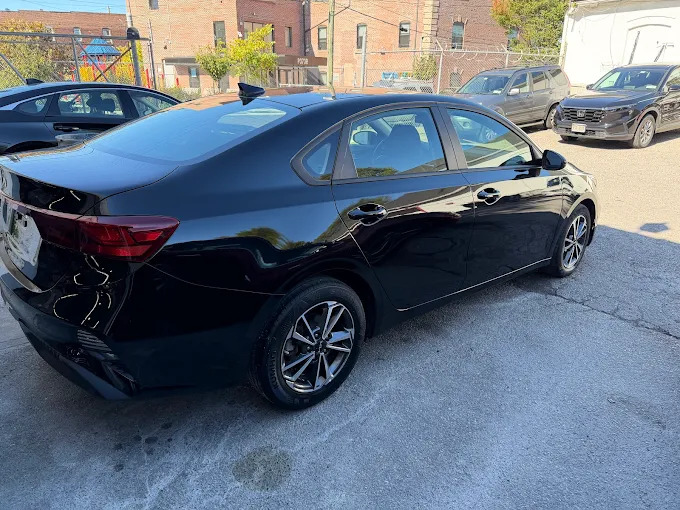Best collision repair shop in NYC
Picking the best collision repair shop in NYC starts with proof that the facility is registered with the NYS DMV and follows the Repair Shop Act for estimates, authorizations, and invoices. New York law also protects your right to choose your shop, and reputable facilities display a required sign stating insurers cannot force you to go elsewhere. For today’s tech-heavy cars, look for training such as I‑CAR Gold Class and the ability to scan and calibrate ADAS after a crash.
Your rights in New York
Under the Repair Shop Act, you can request a written estimate that lists parts and labor, and a shop cannot charge more than the estimate without your permission. You must authorize work before it begins, and the invoice must show details like parts used, costs, and odometer readings at drop-off and billing. You have the right to inspect the vehicle and, upon request, get replaced parts back except for warranty or exchange items, which supports transparency. If there’s a problem, you generally have 90 days or 3,000 miles to file a complaint with DMV, and many disputes resolve through mediation or hearings.

Verify licensing and registration
Only work with a shop that’s visibly registered—look for the green-and-white “Registered State of New York Motor Vehicle Repair Shop” sign and a valid DMV registration certificate inside. Every facility must meet recordkeeping and disclosure requirements, and any move or name change must be reported to DMV, which signals regulatory accountability. By choosing a DMV-registered shop, you gain access to formal complaint processes and enforcement if something goes wrong.
Training and certifications
Modern repairs demand constant education, so prioritize shops with I‑CAR Gold Class recognition, which indicates ongoing role-based training across key disciplines like structural repair and refinishing. This training helps technicians follow OEM procedures on vehicles with complex materials and safety systems, improving safety and repair accuracy. When combined with OEM certifications for specific brands, the result is more consistent repairs that align with factory methods and requirements.
OEM procedures and parts choices
Ask whether the shop follows manufacturer repair procedures and which parts they plan to use for your car, since OEM procedures are designed to restore crashworthiness and safety features as intended. In New York, when an insurer writes an estimate using non‑OEM crash parts, Reg 64 requires specific disclosures, and customer-facing invoices must clearly state if parts are OEM, aftermarket, or used. Clarity on parts helps you understand how the shop will balance cost, fit, safety, and any warranty considerations.
ADAS and EV readiness in 2025
Even minor collisions can require ADAS calibrations because cameras, radars, and sensors may be disturbed, and several OEMs direct calibration after any crash or structural repair. Look for shops that document pre- and post-repair scans and provide calibration reports that show systems are working as designed. If you drive an EV, ask about high-voltage safety protocols, insulated tools, and OEM repair data access so the team can manage battery integrity and thermal systems safely.
Insurance and no‑fault basics
New York’s no‑fault system applies to injuries, not vehicle damage, so property damage typically goes through collision coverage or the at‑fault driver’s liability coverage depending on fault and coverage limits. If you caused the crash, your collision coverage usually pays for repairs, but if another driver is at fault, you may pursue their insurer for the property damage claim. Be prepared to show your chosen shop’s estimate and procedures to an insurer, but remember the law protects your right to use the shop you prefer.
Estimates, authorizations, invoices
A proper written estimate lists parts and labor for each repair and notes if any parts are used or not of original quality, and the shop cannot exceed that estimate without your consent. The invoice must detail all repairs, list parts and labor costs, indicate parts types, and record odometer readings at drop-off and billing to support accuracy and transparency. If authorization happened by phone, the invoice should capture the date, time, and name of the person who approved the work.

Warranties, timelines, and communication
Shops aren’t required to guarantee repairs, but if they do, the terms and duration must be listed on the invoice so you know exactly what’s covered and for how long. Ask the shop to set a delivery date on the repair order and agree on how often they’ll update you about parts, supplements, and calibrations. Clear communication helps manage expectations when insurers review estimates or when hidden damage is found after teardown.
On-site visit checklist
A quick walk-through says a lot: look for organized work areas, frame equipment, welders, refinish booths, and a clean space suitable for ADAS calibration or safe subletting to a trusted calibration partner. Ask to see sample printouts of pre/post scans and calibration reports with VINs redacted, showing the process they use to verify safety systems after repairs. Check that estimates and invoices match the state-required detail, which signals strong documentation habits and compliance.
How to verify a shop (step-by-step)
- Check for the DMV registration sign outside and the certificate inside, then confirm details match the shop name and address on your estimate and invoice.
- Ask to see I‑CAR Gold Class proof and any OEM program listings for your vehicle’s brand, which supports correct procedures and tooling.
- Confirm the plan for scanning and calibration, including whether they handle ADAS in-house or use a qualified calibration partner with OEM-compliant methods.
- Review the written estimate and ensure it lists parts types, labor methods, authorization details, and a reasonable timeline with communication checkpoints.
Red flags to avoid
Be cautious if a shop refuses to provide a written estimate on request, won’t explain parts choices, or tries to begin work without clear authorization. Avoid facilities that can’t show training credentials or calibration documentation, since that can put safety systems at risk on the road. Watch for steering pressure from any insurer, because the law requires shops to display a notice affirming your right to choose your repairer.
Neighborhood and local context
In NYC, the Department of Consumer and Worker Protection enforces consumer protection laws and publishes enforcement metrics, which reinforces a citywide focus on business compliance and fair dealing. Still, auto repair shop registration and discipline are handled at the state level by NYS DMV, so always verify state compliance first. Given traffic and distance, consider a shop that’s convenient to your home or work while still meeting training, documentation, and calibration standards.

Comparison: certifications and parts
| Topic | Why it matters | What to check |
| I‑CAR Gold Class | Signals ongoing training for estimators and technicians on the latest vehicle systems and repair methods . | Valid recognition on the I‑CAR site or certificate on-site . |
| OEM certification | Aligns repairs to brand procedures and tools, helping restore safety and function as designed . | OEM network listing for your brand and current status . |
| Parts type (OEM vs aftermarket/used) | New York requires disclosure of parts type on estimates and invoices, affecting fit, safety, cost, and potential warranties . | Estimate lines labeled OEM/aftermarket/used and clear Reg 64 disclosures where applicable . |
2025 trends to watch
Expect tighter attention on ADAS documentation and OEM-only calibration procedures, with insurers increasingly requiring proof of proper system restoration before payouts. National policy conversations on right‑to‑repair continue in 2025 as vehicles become more software‑driven, keeping access to data and procedures in the spotlight for independent shops and consumers. Locally, NYC’s consumer enforcement posture remains active, while NYS DMV maintains repair shop oversight and complaint resolution.
FAQs about the best collision repair shop in NYC
What’s the fastest way to verify a shop when choosing the best collision repair shop in NYC?
Look for the DMV registration sign and certificate, then read the written estimate and parts disclosures before authorizing work.
Do insurers decide where to fix my car when I choose the best collision repair shop in NYC?
No, New York requires shops to post a sign affirming insurers cannot require you to use a particular facility, and you have the right to choose.
Should I ask about ADAS before picking the best collision repair shop in NYC?
Yes, many OEMs require post-collision calibrations even after minor damage, so confirmed scans and calibration are documented.
How do estimates and invoices protect me when I pick the best collision repair shop in NYC?
State rules require detailed estimates on request and invoices that list parts and labor, and the shop cannot exceed an estimate without consent.
What if I’m unhappy after repairs at the best collision repair shop in NYC?
Try to resolve it with management, then file with DMV’s complaint unit within 90 days or 3,000 miles if needed.
Does New York’s no‑fault cover my car repairs when I’m choosing the best collision repair shop in NYC?
No fault is for injuries, while property damage repairs come from collision coverage or the at‑fault driver’s liability policy depending on circumstances.
Conclusion
By checking DMV registration, training, OEM procedures, and ADAS calibration capability—and by insisting on detailed estimates and invoices—you can confidently choose a shop that protects safety, value, and time in NYC. With clear communication and your legal right to pick any facility, the repair can be as smooth as possible even after a stressful crash.
- Get a free estimate from a DMV‑registered shop near you today.
- Book a 15‑minute consultation to review your estimate, parts options, and calibration plan before authorizing repairs.
- Ask for an I‑CAR Gold Class and OEM‑procedure walkthrough on your vehicle so you know the plan fits factory standards.
